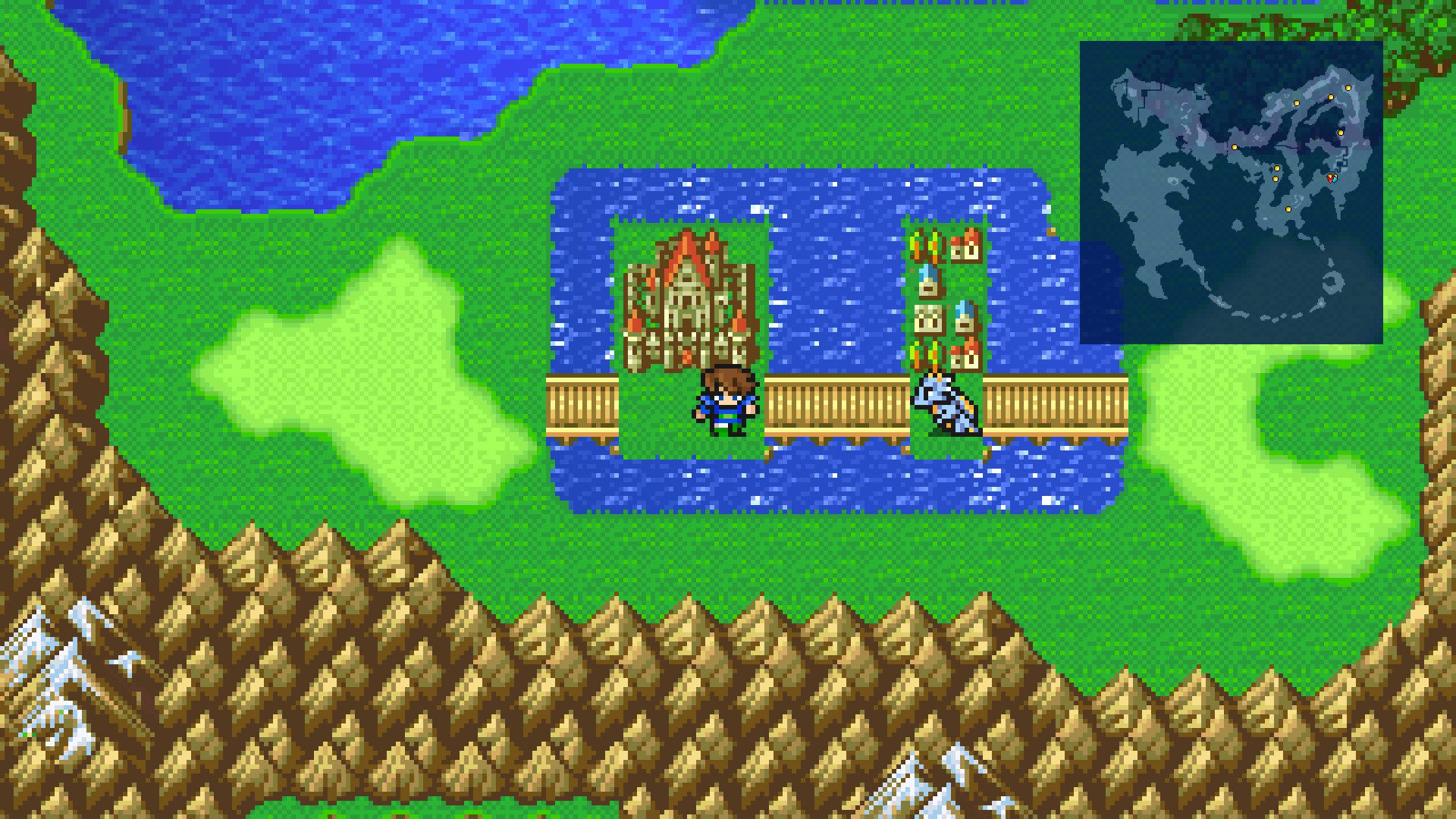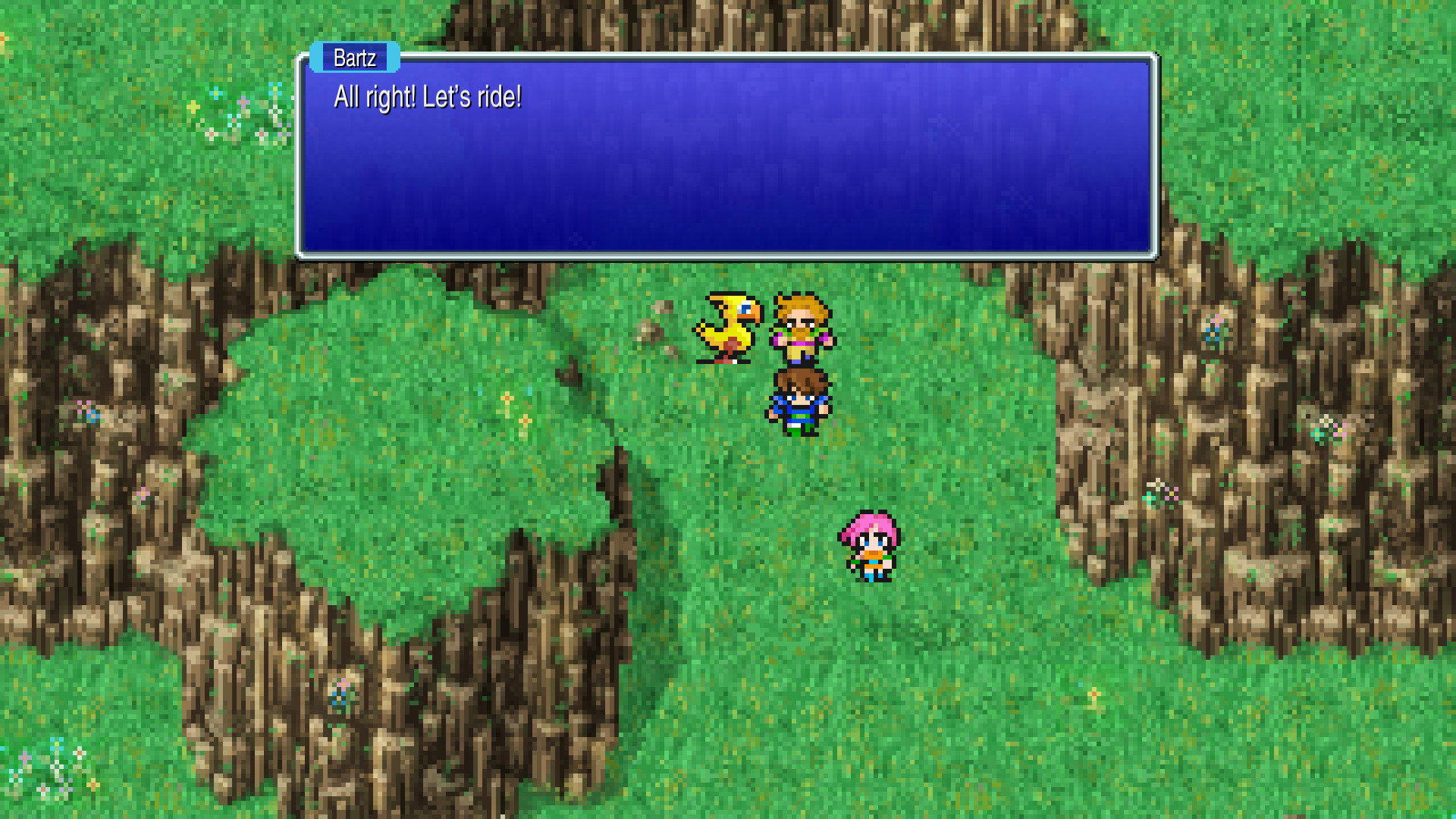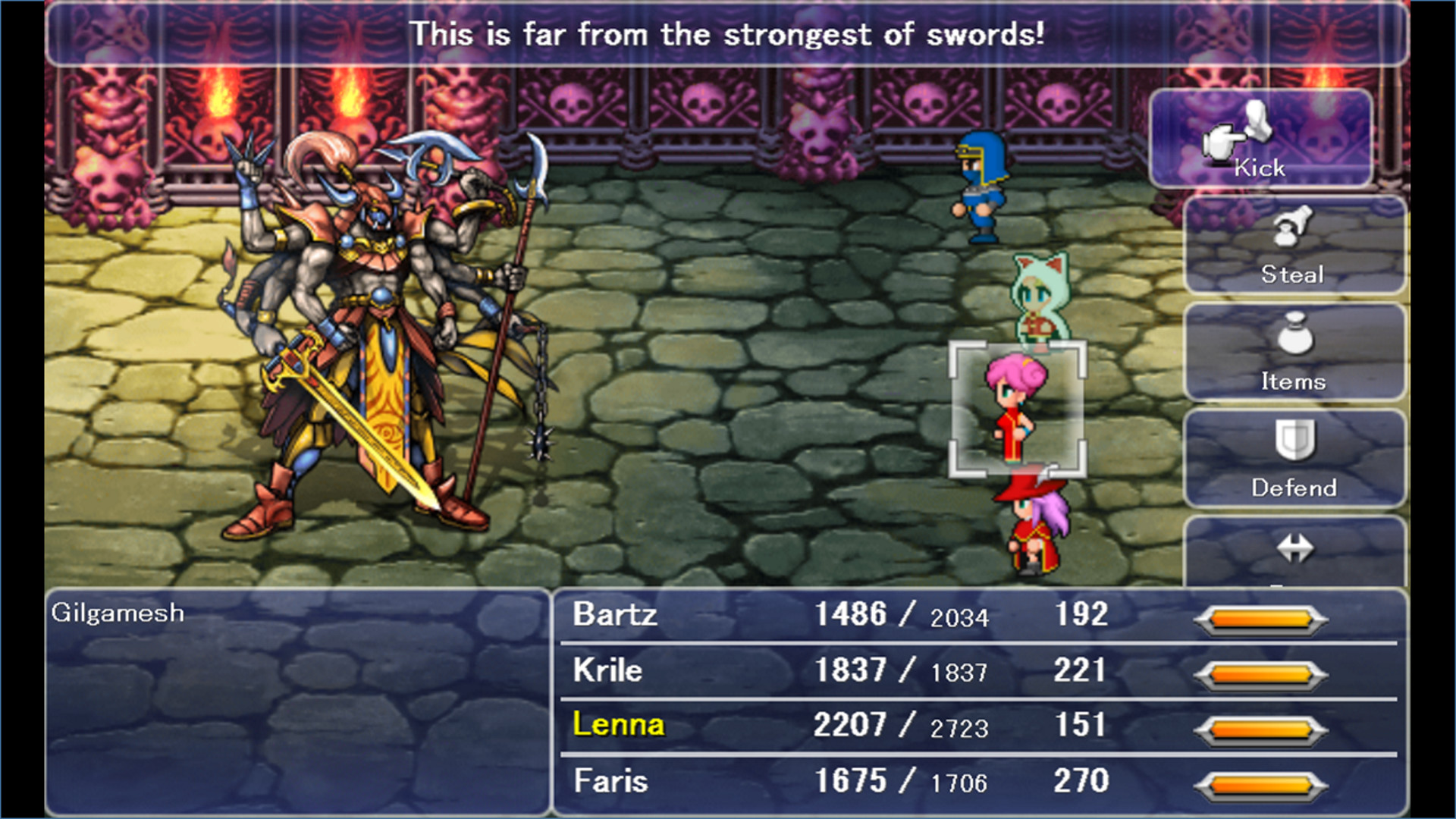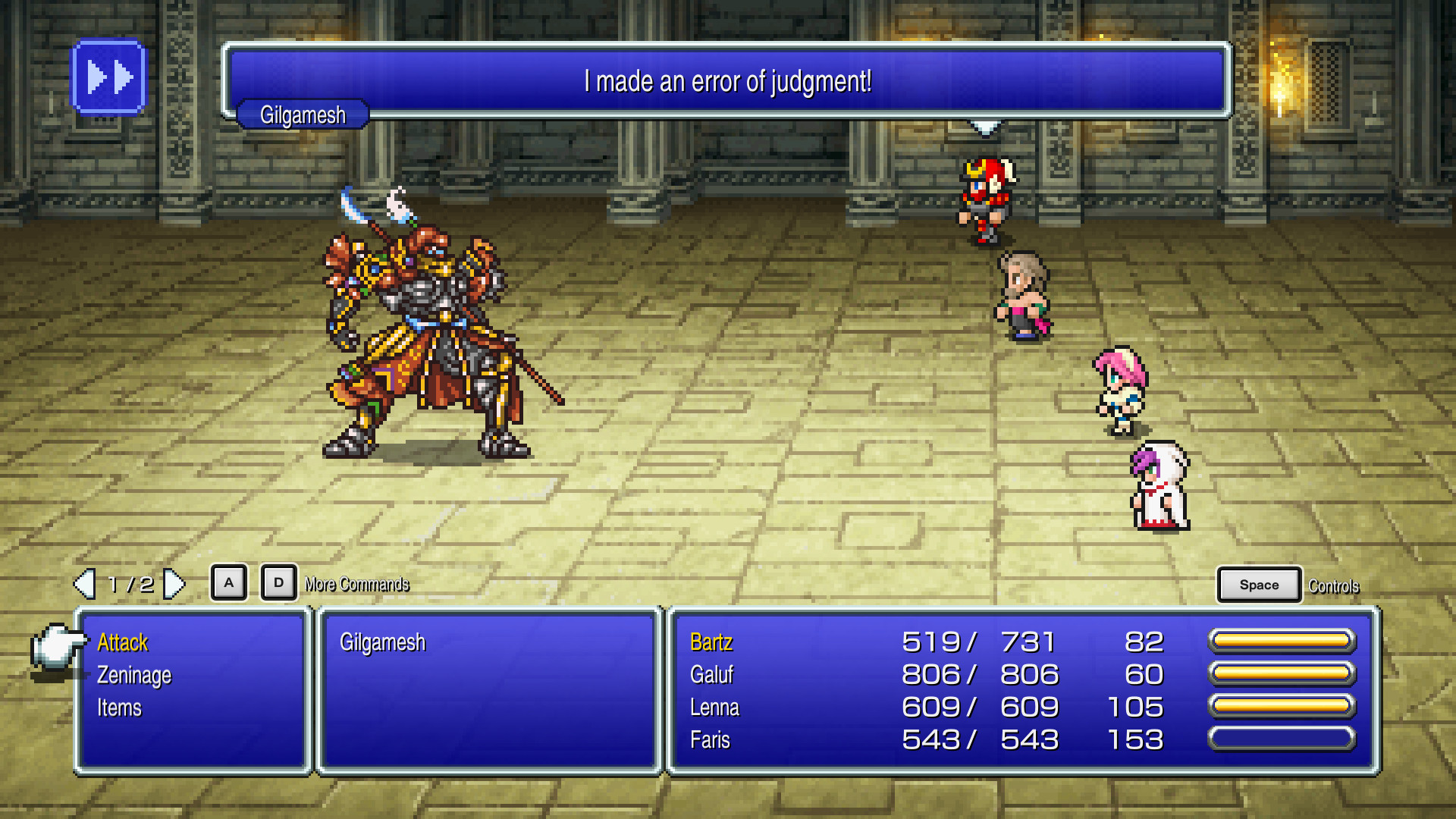Final Fantasy V is a joy to play — and a disaster to buy

Welcome! This column is part of a regular series in which we share what members of the Tom's Guide staff are playing and enjoying right now, with an eye toward helping you find great games that you may have missed. Be sure to check out our previous entry, where we talk about No Man’s Sky.
Final Fantasy V is one of my favorite games in Square Enix’s long-running Japanese role-playing game (JRPG) series. It’s also one of the most confusing to buy. Over the past 23 years, we’ve had no fewer than six different versions of the venerable old game, and choosing the right one is as tricky as it’s ever been.
Over the past week, I’ve had the chance to revisit the charming, retro world of FFV, and I’ve thoroughly enjoyed my adventure so far. What I didn’t enjoy were the hours of research I had to do beforehand, figuring out the minute differences between each iteration, and determining which one would require the fewest compromises. In the end, I had to employ a tedious workaround to even buy the version I wanted. If you’re in the midst of making the same choice, hopefully my experience can help simplify things for you.
The quintessential Final Fantasy

Before diving into the differences between the six different versions of FFV, it’s worth discussing why the game is worth playing in the first place. Recently, the Tom’s Guide Staff ranked every mainline Final Fantasy game, and FFV wound up at the dead center of the list. That’s because the game is arguably the quintessential Final Fantasy experience. There are four Warriors of Light who forge an unbreakable friendship, eight magical crystals that need protecting, 22 playable Jobs to master and about 40 hours of gameplay to see the adventure through to its satisfying conclusion.
I first played Final Fantasy V in middle school, and it’s safe to say that the game threw me for a loop. After the gentle difficulty curve in Final Fantasy VII and the easy-to-break battle system in Final Fantasy VIII, FFV felt like a splash of cold water. The game vacillates between “difficult” and “punishing,” and the open-ended character customization just makes things more confusing.
FFV’s major conceit is that your characters can master 22 different Jobs, such as Knight or White Mage. As you master each Job, you can mix and match abilities. For example: You could have a Black Mage who’s also a master archer, or a Bard who can equip heavy armor. With four characters to customize, FFV can be an enjoyably deep rabbit hole.
However, not all classes — or combinations — are created equal. It’s entirely possible to make a weak character build, or even an entire party full of them. While you can always recalibrate and try again, the game has a heck of a learning curve. That makes it all the more satisfying when you find a character build that really, really works.
With 20 years of hindsight at my disposal, FFV isn’t perfect. Mastering Jobs takes entirely too long, meaning that you’ll have to level-grind for hours and hours if you want to do any substantial experimentation. One false move in a boss fight could wipe out your whole party, even early on. The story and characters are a bit thin, and the villain’s motivation makes little sense.
Get instant access to breaking news, the hottest reviews, great deals and helpful tips.
And yet, FFV is also an extremely charming game, particularly for longtime FF fans. In Square Enix’s helpful “Which Final Fantasy game should I play first?” post, it recommends playing FFV if “you enjoy battle systems with a lot of depth,” “you want as many options as possible in how you build your party” and “you like to laugh” — as FFV has a lot of laugh-out-loud moments.
That’s all true, and I can’t imagine any JRPG fan walking away from FFV feeling disappointed. But I can easily imagine a JRPG fan feeling overwhelmed by all the different versions out there.
Six different versions

Gaming history buffs will know that Final Fantasy V was a “lost” title in the West for seven long years. North American audiences got the original Final Fantasy on the NES, followed by FFIV (called FFII) and FFVI (called FFIII) on the Super Nintendo. The real FFII and FFIII remained on the other side of the Pacific, as did FFV.
In 1999, Square released Final Fantasy Anthology on the PS1, which collected FFV and FFVI on two discs. It was the first time Western gamers (including this writer) got to experience FFV. However, the game suffered from a shoddy translation and some technical glitches. While I still have my disc kicking around somewhere, I didn’t think this would be the ideal way to replay the game.
The next iteration of the game came in 2006: Final Fantasy V Advance. This Game Boy Advance port cleaned up the translation a bit and added a few quality-of-life improvements, including character portraits during dialogue and a quick save feature. More substantially, though, the game had four new jobs and a bonus dungeon with ultra-difficult bosses. The downside is that the game is hard to come by these days, and the GBA hardware limited the graphical and sound quality.
Next came the PlayStation Network release in 2011, which works on the PlayStation 3, PlayStation Portable and PlayStation Vita. I strongly considered this one, as I recently replayed FFIV on the Vita, and it was a fantastic experience. However, this release of the game is simply a port of the PS1 version, with translation and performance woes intact.
The iOS/Android version of FFV, which came out in 2013, seemed promising. This updated version of the game offered a bunch of improvements, including eight-directional movement, an auto-battle setting and tons of little gameplay fixes. It also included the bonus GBA content. However, this version of the game is deprecated, and you can no longer buy it on the Apple App Store or Google Play Store. Sideloading Android APKs is a great way to infect your phone with malware, so I decided to give this one a miss.
In 2015, Square ported the iOS/Android version to Steam, with controller support and achievements. But, like the iOS/Android version, you can no longer buy this one — at least not through Steam.
That brings us to the latest FFV release: Final Fantasy V Pixel Remaster from 2021. This is part of Square Enix’s Final Fantasy Pixel Remaster series, which makes classic FF games playable on modern PCs and mobile devices, keeping their original pixel art intact as much as possible. By all accounts, this is the “definitive” version of the game — and yet it doesn’t have the bonus classes and dungeon from the GBA version.
In the end, I figured if I was going to replay FFV, I wanted to see the bonus content, even if Square Enix didn’t particularly didn’t want me to see it. By going through the third-party Humble Store, I was able to buy a code for the “old version” of FFV and redeem it on Steam. It was a roundabout solution, but it worked.
Preserving a classic game

Finding and buying the version of FFV I wanted was a vexing process. The frustrating part is that it didn’t have to be. Square Enix decided to remove the version I wanted from iOS, Android and Steam, but I still can’t follow the company’s reasoning. There are multiple versions of FFIII and FFIV available, and apparently, customers can still find the version they want.
What’s more, by removing perfectly playable versions of a game, Square Enix is essentially making chunks of gaming history disappear. Even if Square Enix would rather you play the Pixel Remaster version, that should be a consumer’s choice, not the publisher’s. I’ve written at length before about why game preservation is so important, and letting players pick which version of a game they want is a pretty simple way to make it happen.
In any case, I have the version of FFV I want to play, but I wonder what will happen if future generations want to play FFV with all the bonus content intact. Maybe we’re only a few years off from a remaster of the Pixel Remaster edition.
Next: Looking for something else to play? Check out Hell Let Loose that is too good for its own good.

Marshall Honorof was a senior editor for Tom's Guide, overseeing the site's coverage of gaming hardware and software. He comes from a science writing background, having studied paleomammalogy, biological anthropology, and the history of science and technology. After hours, you can find him practicing taekwondo or doing deep dives on classic sci-fi.
